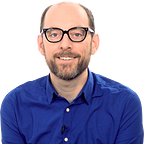Francis Su, Human Flourishing, and the Doing of Mathematics
A while ago I got fascinated with the idea that a given configuration of a deck of cards may never have existed before on this planet. Indeed, 52! is an astonishing number. Francis Su nicely gets at this idea by asking this:
Which of these quantities is the largest?
A. The number of stars in the universe.
B. the number of seconds since the big bang- the beginning of time.
C. the number of possible configurations of a deck of cards.
Su makes a very interesting question out of this. It is an interesting idea to talk about. His book is full of interesting puzzles that recall Alex Bellos and Howard Gardner.
For many in the mathematics and mathematics education communities, Francis Su’s Mathematics for Human Flourishing is the most anticipated book of the year. Based on his talk as outgoing president of the Mathematics Association of America, the book is organized around basic human desires that lead to human flourishing, and is framed around Christopher, an inmate in a federal prison who starts to teach himself mathematics and to correspond with Su.
We can see this book as part of a broader trend on the part of educators to “humanize” mathematics- to see it as less “austere” and “cold”, to paraphrase Hardy, and situated as more of a human, practical, and even joyful activity.
The book is not necessarily a pedagogical statement, although it could be situated in the tradition of such works as Lockhart’s “A Mathematician’s Lament”- poetic and wise. It is an aspirational statement for mathematics itself. For me, the key section in this book is the section on “Struggle”, where Su lays out the difference between “internal” and “external” goods.
“Internal goods are goods that come about by engaging in a practice and are bound up intrinsically with that practice and are bound up intrinsically with that practice.”
The divide between internal and external “goods” is the divide between intrinsic and extrinsic motivation. On the one hand, we have the pleasure of doing mathematics, of practicing, improving, and having success. On the other, we have external factors such as grades. School mathematics, at least, has often been focused on bringing the “external goods”, often to satisfy the gatekeepers in the next grade, panel or grade band. Tied up into this conversation is the virtue of seeing “Beauty”. An expanding and growing mathematical consciousness should start to perceive aesthetic beauty through mathematics.
As Su notes, aesthetic beauty is the most common kind of mathematical beauty, found in things like Islamic art, and M.C. Escher’s and Kandinsky’s art. But I believe young children can start to apprehend mathematical beauty, beyond the aesthetic. They can start to build intuition, and webs of connections between mathematical objects, ideas, and subfields. This sort of mental landscape, a richly connected mathematical landscape, is the internal “goods” we can all have, with patience and study.
Su states plainly:
“the struggle to grow-to achieve internal goods-is a mark of human flourishing.”
This is to say that most human endeavours that are worth doing provide an appropriate level of challenge. Consider the work of Ericsson, summarized in Peak: productive struggle is pitched just slightly above what you “can do” in the present moment. To borrow from astronomers, there is a certain “Goldilocks zone” for learning anything. No challenge means no growth, but too much challenge means giving up. “Productive struggle” in a mathematics education context is much debated, but even those who question the term’s use don’t advocate for “no struggle”.
For Christopher, his struggle is his need to mentally escape, while physically incarcerated. Mathematics, for Christopher, is the practice of mental freedom. Although bound in a nutshell, his mind grows in skill and use of mathematics. His correspondence with Su shows a continual growth through discovering the structure, order, and power of mathematics. His body is captive, but his mind is free to roam.
“Freedom is knowing all the options available to you.”
- Christopher Jackson
Mathematics can lead to economic freedom, sure, but for Christopher the point was mental freedom. He seeks to atone for his youthful mistakes, and gives back to others as a GED tutor in the prison.
As the book begins with a quotation from Simone Weil:
“every human being cries out silently to be read differently.”
Mathematics is a powerful tool, as per Freire (whom this book echoes in some ways), to “read the Word, and the world”.
I have been talking up Su’s talk since it happened, and using this slide in some work I have done:
I want a more humane and just mathematics for my children. I want a mathematics for human flourishing for them.
@MatthewOldridge is trying to make two young human boys into flourishing adults.
